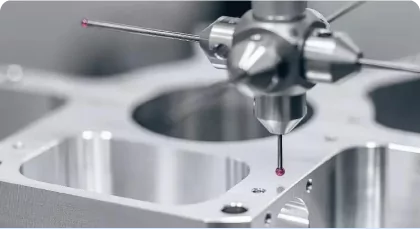Five-axis CNC machining Manufacturers
Five-axis CNC machining
Five-axis CNC machining refers to a type of computer numerical control (CNC) machining that uses a machine capable of moving a tool or workpiece along five different axes simultaneously. Unlike three-axis machines, which operate along the X, Y, and Z linear axes, five-axis machines add two rotary axes (usually denoted as A and B) to provide more flexibility and precision.
Key Features of Five-Axis CNC Machining
Simultaneous Multi-Axis Movement
The tool or workpiece can move in five directions at once, allowing for complex geometries and shapes.
Improved Precision and Accuracy
By minimizing the need to reposition the workpiece, five-axis machines reduce errors and achieve higher tolerances.
Efficiency and Speed
Complex parts can be completed in a single setup, reducing production time.
Versatility
Five-axis machines are suitable for producing parts with intricate curves, undercuts, and features that are otherwise impossible to achieve with traditional three-axis systems.
Five-axis CNC machining Applications
Five-axis CNC machining is widely used in industries that demand high precision and complexity, such as:
Aerospace: Manufacturing turbine blades, airframe components, and engine parts.
Automotive: Prototyping and producing molds, engine components, and custom parts.
Medical: Creating surgical implants, orthopedic devices, and other medical tools.
Energy: Fabricating components for wind turbines, hydroelectric systems, and power plants.
Five-axis CNC machining Advantages
Single Setup Machining
Reduces repositioning and setup time, ensuring consistency and efficiency.
Enhanced Surface Finish
The ability to tilt the tool optimally results in smoother surfaces and less post-processing.
Complex Geometries
Allows for the creation of intricate designs and shapes that are otherwise difficult to achieve.
Cost-Effectiveness
Although initial investments are high, reduced time, labor, and material waste offset the costs in high-precision manufacturing.
Five-axis CNC machining Challenges
Cost: Five-axis machines and their maintenance are significantly more expensive than three-axis machines.
Programming Complexity: Requires advanced CAD/CAM software and skilled operators.
Initial Learning Curve: Steeper learning curve for operators and programmers unfamiliar with five-axis systems.
Five-axis CNC machining is an advanced technology revolutionizing precision manufacturing. Its ability to produce intricate, high-quality parts efficiently makes it indispensable in modern industries, despite its challenges. With continuous advancements, it is becoming more accessible and widely adopted.








